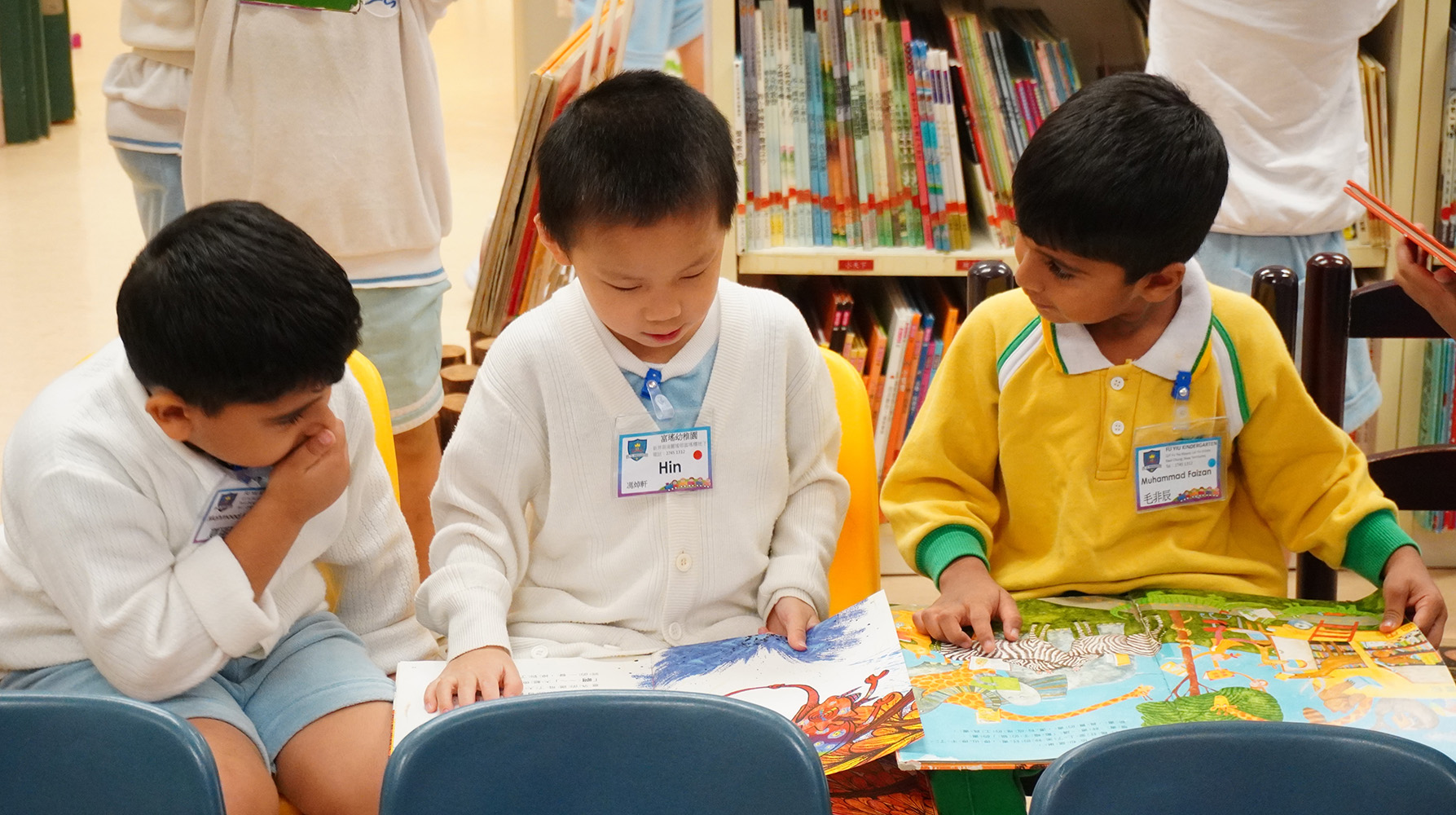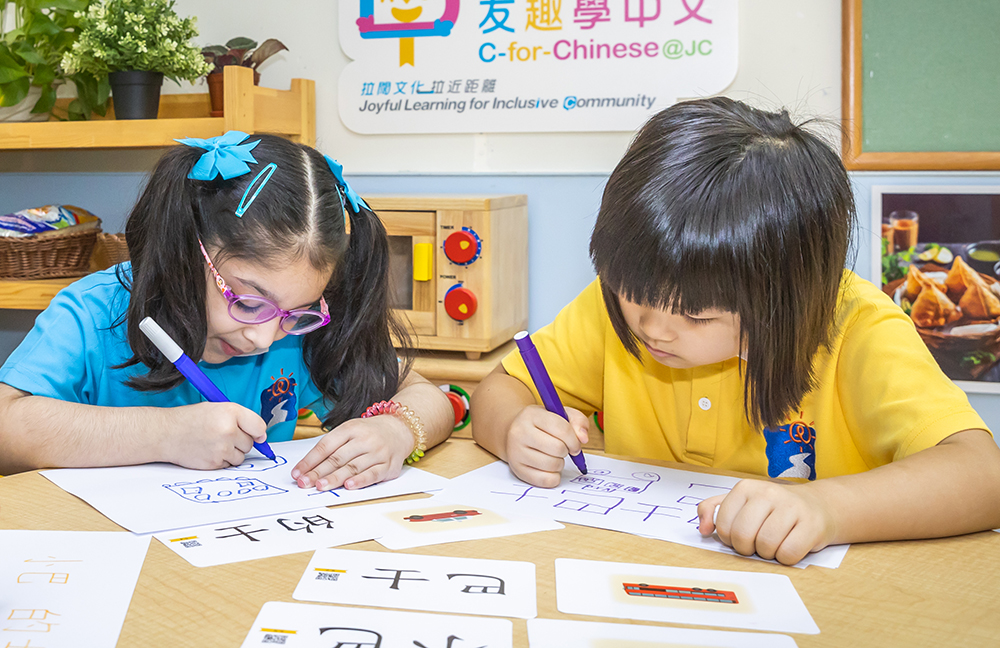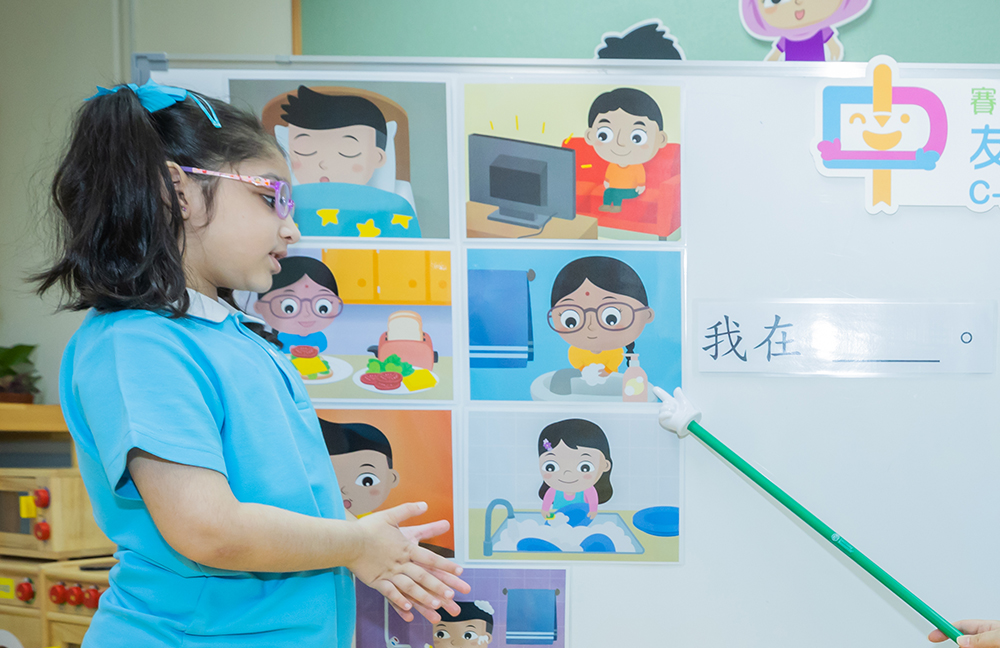Kindergarten to Primary School Transition Support
Why Transition from Kindergarten to Primary School is a Critical Stage?
The transition from kindergarten to primary school is an important stage in child development, especially for non-Chinese speaking (NCS) ethnic minority (EM) students. To boost self-confidence and stay motivated in a new environment, it is of paramount importance that educators and teachers pay attention to the following three key aspects of adaptation – school life, learning attitudes, and the Chinese language to help the children get ready for primary school.

Adaptation to Primary School Life
Transition to primary school marks the beginning for a child to follow a structured timetable. Kindergarten teachers can help K3 students get ready for primary school by informing them of the upcoming changes in school routines, rules, and different teaching and learning modes. This can be done in a number of ways:
Simulation: Simulate the classroom setting, routines, and timetables of Primary One.
Visits: Arrange visits to primary schools.
Talks and Brochures: Organise sharing sessions for parents on selecting primary schools and distribute references such as "Primary School Profiles" by the Committee on Home-School Co-operation, and "Going to Primary School – Parent-child Reading & Colouring Booklet".
Collaboration: Work with parents closely to help students learn to make new friends actively and develop their social skills through parent-child games and activities.
Adopted from "Basic Education Curriculum Guide - To Sustain, Deepen and Focus on Learning to Learn (Primary 1 - 6)"
Adaptation to Primary School Learning
To facilitate NCS EM students' transition to primary school, teachers should help students cultivate an active and independent learning attitude by encouraging them to complete homework independently. Here are some suggestions to get them ready for primary school:
Proceed gradually: Increase the amount of writing assignments step by step. Introduce types of assignments such as reading, information collection, and parent-child collaborative tasks.
Introduce the handbook: Help students develop the habit of recording assignments using student handbooks.
Develop independence and interpersonal skills: Help students develop self-management, self-discipline, and collaboration skills through holistic curriculum planning.
Adopted from "Basic Education Curriculum Guide - To Sustain, Deepen and Focus on Learning to Learn (Primary 1 - 6)"
Adaptation to Learning Chinese in Primary School
Being able to express oneself in Chinese in and out of the classroom helps NCS EM students engage better on campus and in the community. By the time they graduate, they better attain to certain level in Chinese:
Listening: Able to comprehend simple information, instructions, and questions in everyday contexts. Click here to learn more (Chinese version only).
Speaking: Able to name daily necessities, answer simple questions, and express personal needs and feelings in short phrases or sentences. Click here to learn more (Chinese version only).
Reading: Able to read simple Chinese vocabulary and retell a small part of reading texts. Click here to learn more (Chinese version only).
Writing: Able to copy and write simple Chinese characters. Click here to learn more (Chinese version only).
To understand different levels of language acquisition, teachers can make reference from "Chinese Language Curriculum Second Language Learning Framework" by the Education Bureau.
Teachers and schools are welcome to get in touch with us for support on kindergarten to primary school transition.
+852 3188 1226
[email protected]
+852 3188 1266
+852 2690 1111
[email protected]
+852 2690 1117